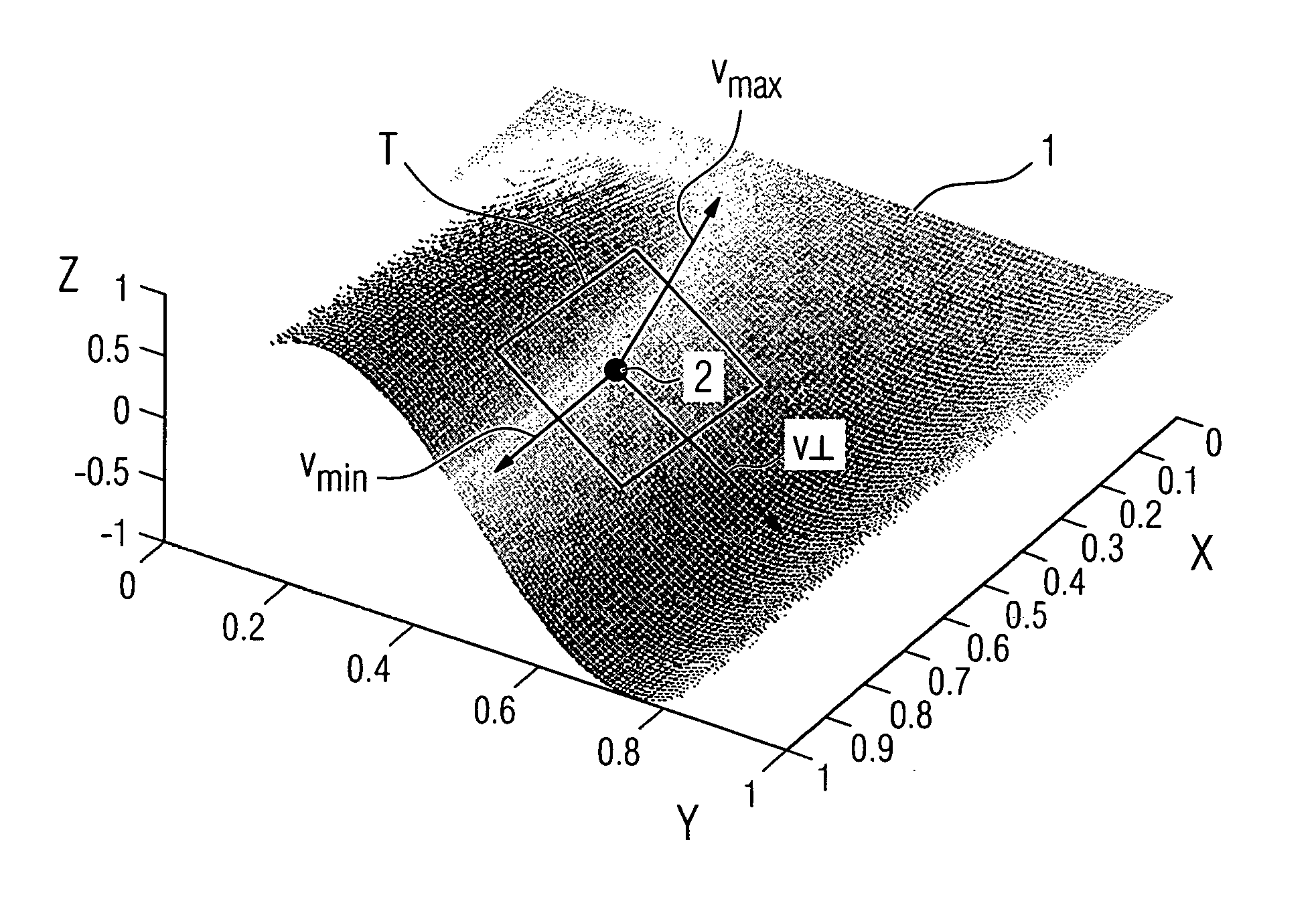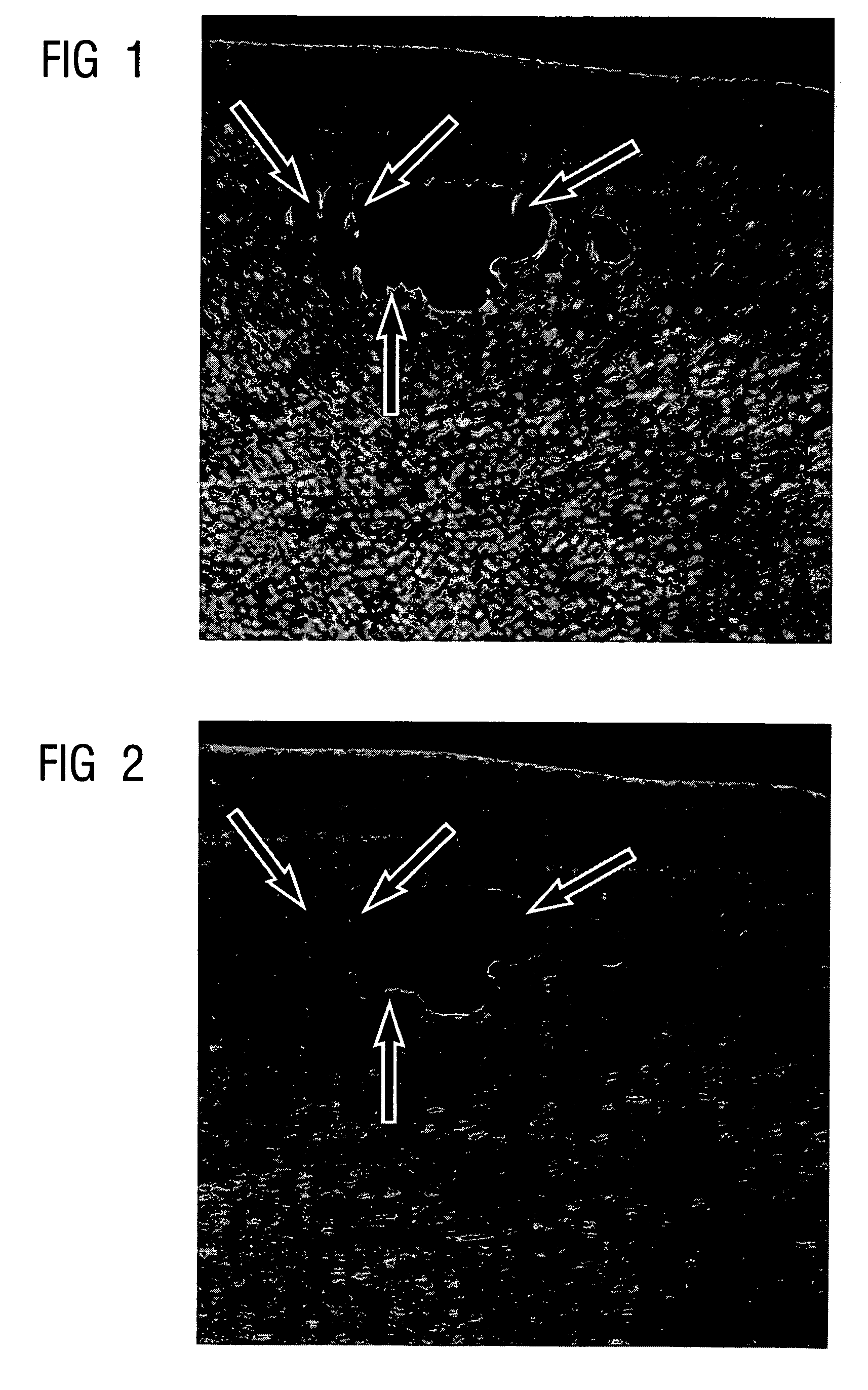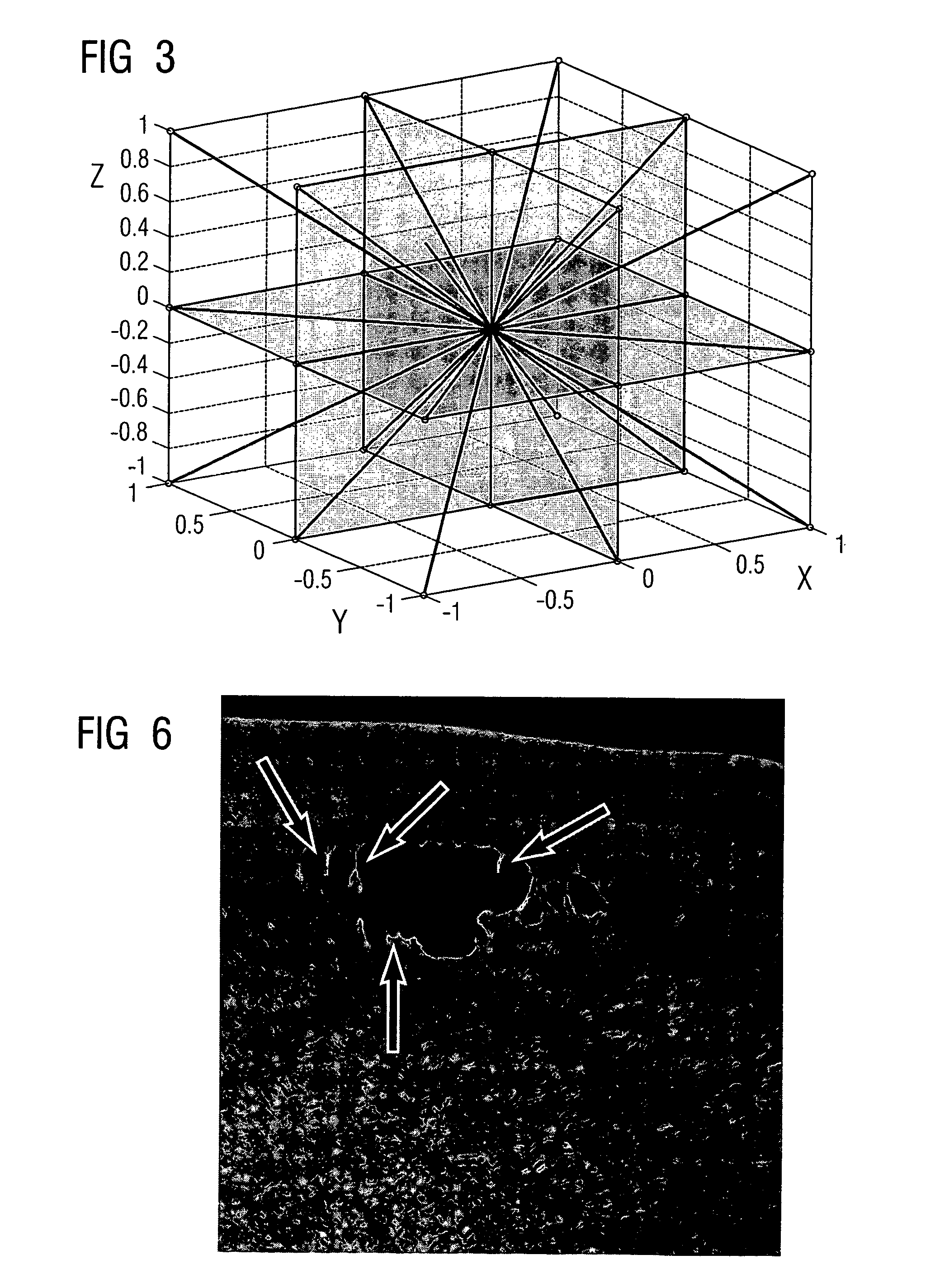Method for filtering tomographic 3D images after completed reconstruction of volume data
a volume data and volume data technology, applied in tomography, image enhancement, instruments, etc., can solve the problems of filtering or even removal, and achieve the effect of rich detail in representation and better ratio of applied dose to image quality
- Summary
- Abstract
- Description
- Claims
- Application Information
AI Technical Summary
Benefits of technology
Problems solved by technology
Method used
Image
Examples
Embodiment Construction
[0033]FIGS. 1 and 2 show the problems of linear low pass filtering of a CT picture. Shown in FIG. 1 is the unfiltered image of a CT section that is reproduced in FIG. 2 after filtering by a linear low pass filter. Although the desired reduction in noise is yielded thereby, the image sharpness decreases, small structures are lost and the edges become blurred. These problem areas are indicated in FIGS. 1 and 2 by the arrows drawn in.
[0034]In accordance with the method according to an embodiment of the invention, this problem is solved, for example, by applying the following, particularly preferred method steps:
Step 1:
[0035]For each image voxel which represents a data point in the three-dimensional space of an examination object having coordinates x, y, z, one-dimensional variances are calculated in a suitable radius R for numerous spatial directions. An expedient selection for these spatial directions is illustrated by way of example in FIG. 3. Illustrated here are the three canonical...
PUM
| Property | Measurement | Unit |
|---|---|---|
| volume model | aaaaa | aaaaa |
| volume | aaaaa | aaaaa |
| total volume | aaaaa | aaaaa |
Abstract
Description
Claims
Application Information
 Login to view more
Login to view more - R&D Engineer
- R&D Manager
- IP Professional
- Industry Leading Data Capabilities
- Powerful AI technology
- Patent DNA Extraction
Browse by: Latest US Patents, China's latest patents, Technical Efficacy Thesaurus, Application Domain, Technology Topic.
© 2024 PatSnap. All rights reserved.Legal|Privacy policy|Modern Slavery Act Transparency Statement|Sitemap



